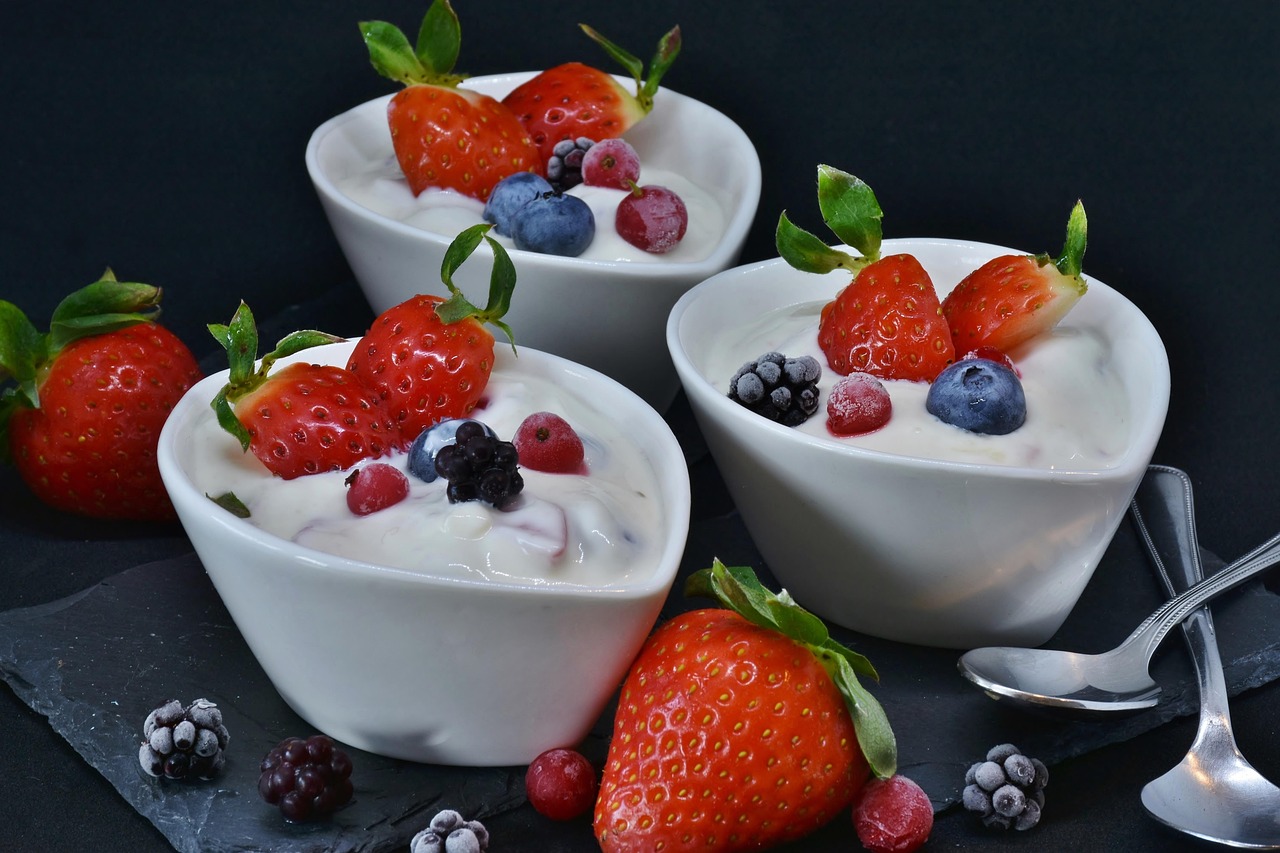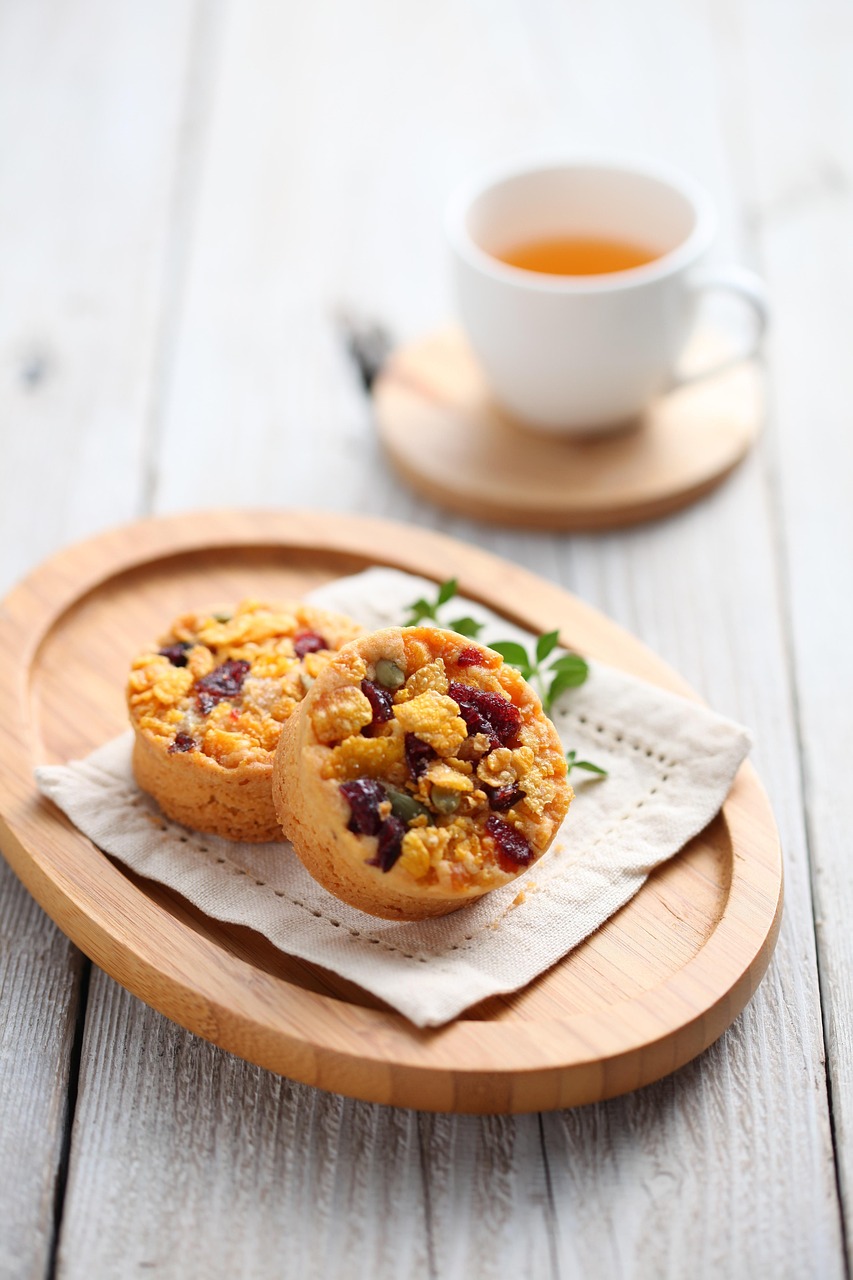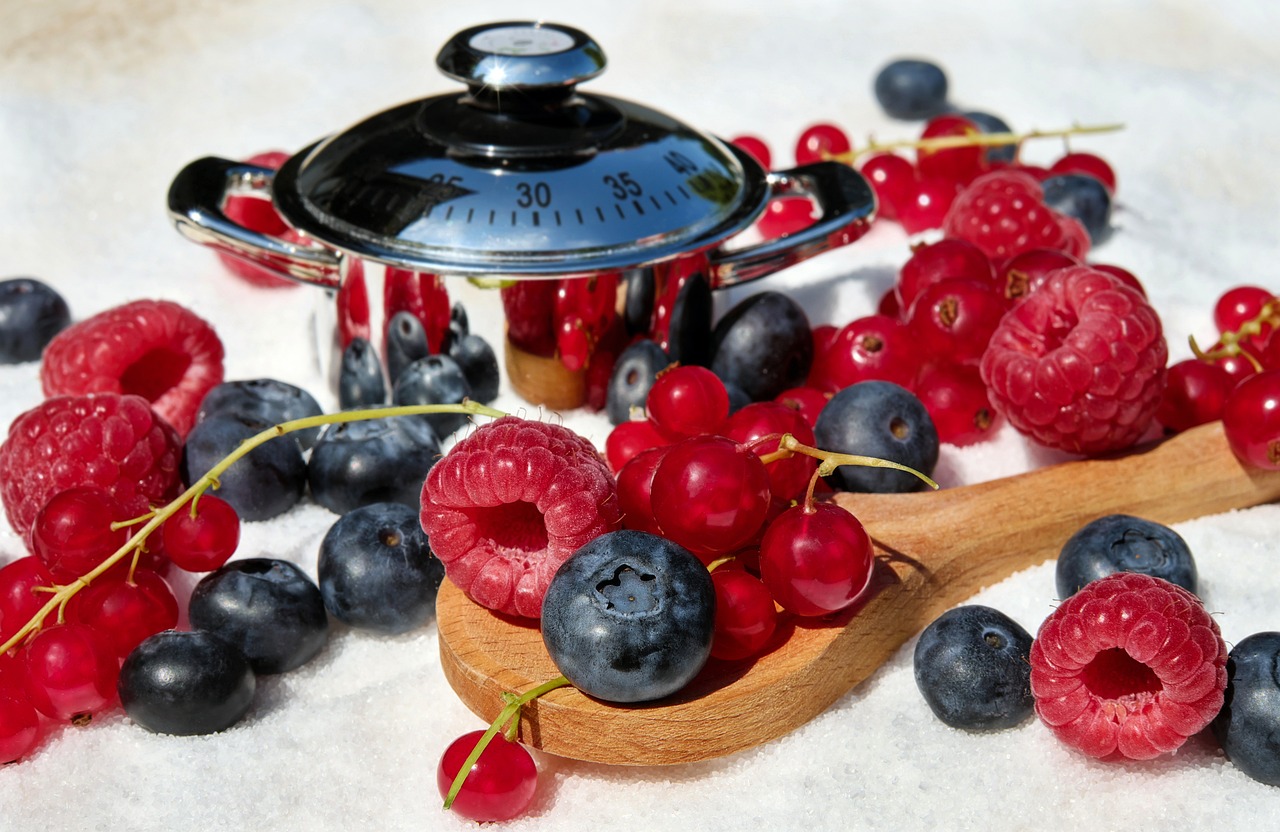Berry recipes are a delightful way to enjoy the fruits of your garden. Simple preparations like berry smoothies, jams, and desserts can highlight the fresh flavors of strawberries, blueberries, raspberries, and more. With minimal ingredients, you can create delicious dishes that celebrate the bounty of your garden.
Growing your own berries can be a rewarding experience. Not only do they provide a source of fresh produce, but they also offer a variety of culinary opportunities. Berries are packed with vitamins and antioxidants, making them a healthy addition to any meal. Moreover, they can be enjoyed in numerous ways, from sweet to savory dishes.
Different types of berries flourish in various climates. For instance, strawberries thrive in well-drained soil and full sun, while blueberries prefer acidic soil conditions. Raspberries and blackberries are also popular garden choices due to their vigorous growth and high yields. Understanding the needs of each berry type can ensure a fruitful harvest.
Popular Types of Berries

Here are some of the most common berries you might consider growing in your garden:
- Strawberries: Sweet and juicy, ideal for desserts and snacks.
- Blueberries: Packed with antioxidants, perfect for smoothies and jams.
- Raspberries: Tart and vibrant, great for sauces and salads.
- Blackberries: Bold flavor, excellent for baking and preserves.
- Cranberries: Tart and tangy, often used in sauces and drinks.
Using fresh berries in recipes not only enhances flavor but also adds nutritional value. Berries are low in calories but rich in vitamins C and K, fiber, and various antioxidants. This makes them an excellent choice for health-conscious individuals looking to indulge without guilt.
When it comes to preparing berry recipes, simplicity is key. Many dishes require just a few ingredients to allow the natural flavors of the berries to shine. From breakfast to dessert, there are countless ways to incorporate berries into your meals.
Easy Berry Recipe Ideas
Here are some easy recipe ideas that you can try at home:
- Berry Smoothie: Blend fresh berries with yogurt or milk for a refreshing drink.
- Berry Jam: Cook berries with sugar and lemon juice until thickened for homemade jam.
- Baked Berry Oatmeal: Combine oats, berries, and milk for a nutritious breakfast bake.
- Berry Salad: Toss mixed greens with berries, nuts, and a light vinaigrette.
- Berry Crisp: Bake berries with a crumb topping for a delicious dessert.
To make the most of your berry harvest, consider preserving them. Canning or freezing berries allows you to enjoy their taste throughout the year. This is especially useful during the off-season when fresh berries may not be available. Understanding proper preservation techniques can help maintain the berries’ flavor and nutritional value.
In addition to their culinary uses, berries can also be incorporated into beverages. Berry-infused waters or cocktails can add a refreshing twist to your drinks during the summer months. Experimenting with different combinations can lead to delightful discoveries, making your garden bounty even more enjoyable.
Key Nutritional Benefits of Berries
<td style="border: 1px solid #dddddd; padding: 8
Harvesting and Storing Berries
After growing your berries, knowing the best time to harvest is crucial. Berries typically ripen at different times, depending on the variety and local climate. Harvesting them at the right time ensures maximum flavor and sweetness. Here are some tips for harvesting and storing your homegrown berries:
- Timing: Berries should be picked when they are fully colored and slightly soft to the touch. For strawberries, this means a bright red color. Blueberries should be deep blue, while raspberries should be a vibrant red or black, depending on the variety.
- Gentle Handling: Handle the berries with care to avoid bruising. It is best to pick them in the morning when temperatures are cooler.
- Storage: Store berries in a cool, dry place. Avoid washing them until you are ready to use them, as moisture can lead to mold.
Best Practices for Storing Berries
Storing your berries correctly can prolong their freshness. Here are some methods:
- Refrigeration: Most berries stay fresh for about 3-7 days in the refrigerator. Place them in a breathable container to allow air circulation.
- Freezing: For long-term storage, freeze berries. Spread them in a single layer on a baking sheet, freeze until solid, and then transfer to airtight bags or containers for later use.
- Canning: If you have a large harvest, consider canning. Make jams or jellies by cooking the berries with sugar and pectin, then store them in sterilized jars.
Creative Ways to Use Fresh Berries
Once you have harvested and stored your berries, you may wonder how to use them creatively in your meals. Here are some delicious ideas:
Baked Goods
Berries can enhance a variety of baked goods. Some tasty options include:
- Berry Muffins: Add fresh or frozen berries to your favorite muffin recipe for a burst of flavor.
- Berry Pancakes: Fold berries into pancake batter for a delightful breakfast treat.
- Berry Crumble: Combine berries with a crumb topping for an easy dessert that everyone will love.
Breakfast Dishes
Incorporate berries into your breakfast routine with these ideas:
- Yogurt Parfaits: Layer yogurt with granola and mixed berries for a nutritious breakfast.
- Smoothie Bowls: Blend berries with banana and almond milk, then top with additional fruits and nuts.
- Overnight Oats: Mix oats with milk, chia seeds, and berries for an easy grab-and-go breakfast.
Using Berries in Savory Dishes
Berries are not just for sweets; they can also be used in savory dishes. Here are some ideas to explore:
- Berry Vinaigrette: Blend fresh berries with vinegar, oil, and spices to create a flavorful salad dressing.
- Berry Salsa: Combine diced berries with onions, jalapeños, cilantro, and lime juice for a refreshing salsa.
- Grilled Chicken with Berry Sauce: Serve grilled chicken topped with a sauce made from cooked down berries, sugar, and vinegar for a tangy twist.
Using berries in savory dishes can elevate flavors and add unexpected dimensions to your meals. This versatility makes them a fantastic ingredient to keep on hand throughout the growing season.
Berry-Infused Beverages
Berries can also enhance beverages, making them more refreshing and flavorful. Here are some ideas:
- Berry Infused Water: Add fresh berries to your water pitcher for a naturally flavored drink.
- Berry Smoothies: Blend a mix of berries with yogurt or milk for a nutritious breakfast or snack.
- Berry Cocktails: Muddle berries into cocktails or mocktails for a vibrant touch.
The addition of berries not only improves taste but also adds visual appeal to your drinks. Enjoy experimenting with various combinations to find your favorites.

Health Benefits of Berries

Berries are not just delicious; they are also incredibly nutritious. Incorporating them into your diet can provide a wealth of health benefits. Here are some key advantages of consuming berries:
- Rich in Antioxidants: Berries are packed with antioxidants, such as flavonoids and polyphenols, which help combat oxidative stress in the body.
- Low in Calories: Most berries are low in calories but high in fiber, making them a satisfying snack that can help with weight management.
- Heart Health: Regular consumption of berries may lower blood pressure and cholesterol levels, promoting overall heart health.
- Anti-Inflammatory Properties: The compounds in berries can help reduce inflammation, which is linked to many chronic diseases.
- Improved Brain Function: Some studies suggest that the antioxidants in berries may enhance cognitive function and delay age-related decline.
Adding a variety of berries to your meals can be an effective way to boost your health while enjoying delicious flavors. They can easily be included in snacks, main dishes, and desserts.
Berry Gardening Tips
If you are inspired to grow your own berries, consider these essential gardening tips to ensure a successful yield:
Choosing the Right Location
Berries thrive in specific conditions. Here are some factors to consider when selecting a location for your berry plants:
- Sunlight: Most berry varieties require at least 6-8 hours of full sun each day for optimal growth.
- Soil Quality: Well-draining soil with good organic matter is essential. Consider conducting a soil test to determine pH and nutrient levels.
- Space: Ensure adequate spacing between plants. This allows for proper air circulation and reduces disease risk.
Watering and Fertilization
Proper watering and fertilization are crucial for healthy berry plants. Here are some guidelines:
- Watering: Berries need consistent moisture, especially during fruit development. Aim for about 1-2 inches of water per week, either through rainfall or irrigation.
- Fertilization: Use a balanced fertilizer in early spring, following the manufacturer’s guidelines for application rates.
Pest and Disease Management
Pests and diseases can threaten your berry plants, so it is important to be proactive. Here are some common issues and solutions:
- Birds: They love to eat berries. Use bird netting or scare tactics to protect your harvest.
- Insects: Monitor for pests like aphids or spider mites. Insecticidal soap or neem oil can be effective treatments.
- Diseases: Fungal diseases like powdery mildew can affect berry plants. Ensure proper spacing and airflow, and consider applying fungicides if necessary.
Regular monitoring of your plants will help catch problems early, allowing you to take action before they escalate.
Seasonal Berry Recipes

Berries can be enjoyed all year round with seasonal recipes that highlight their flavors. Each season offers unique ways to use fresh berries:
Spring and Summer Recipes
During the warmer months, fresh berries are at their peak sweetness. Consider these refreshing recipes:
- Berry Salad with Mint: Combine mixed greens, fresh berries, goat cheese, and mint leaves for a vibrant salad.
- Summer Berry Bowl: Mix yogurt with granola and top with fresh berries for a quick breakfast or snack.
- No-Bake Berry Cheesecake: Use a graham cracker crust, cream cheese, and a topping of mixed berries for a delightful dessert.
Fall and Winter Recipes
Berries can also be incorporated into heartier dishes during the cooler months. Try these comforting recipes:
- Berry Compote: Cook down mixed berries with sugar and lemon juice to create a warm topping for pancakes or waffles.
- Baked Oatmeal with Berries: Combine oats, milk, and frozen berries for a cozy breakfast option baked in the oven.
- Berry Crisp with Oat Topping: Bake mixed berries with an oat-based crumb topping for a comforting dessert that pairs well with ice cream.
This versatility in recipes allows you to enjoy the fruits of your labor throughout the seasons, celebrating the flavors of fresh berries all year long.
Exploring Unique Berry Varieties
While strawberries, blueberries, raspberries, and blackberries are the most popular choices for home gardens, there are many unique berry varieties worth considering. These lesser-known options can introduce exciting flavors and textures to your recipes:
- Goji Berries: Known for their health benefits, goji berries are sweet and can be used in smoothies or dried as snacks.
- Mulberries: These sweet berries can be eaten fresh or used in pies and jams.
- Cranberries: While often associated with sauces, fresh cranberries can be added to salads or baked goods for a tart flavor.
- Cloudberries: These rare berries have a unique taste and can be used in desserts or preserved as jams.
- Bilberries: Similar to blueberries but smaller, bilberries are often used in traditional European recipes.
By growing and using these unique berries, you can expand your culinary repertoire and discover new favorite flavors. Each variety brings its own nutritional benefits and culinary possibilities, making them worthwhile additions to any garden.
Berry Preservation Techniques
To enjoy your berry harvest beyond the growing season, mastering preservation techniques is essential. Here are some effective methods to consider:
Canning
Canning is a popular method for preserving berries as jams or jellies. Here’s how you can do it:
- Prepare the Berries: Wash and remove any stems or leaves from the berries.
- Cook Down: Combine berries with sugar and lemon juice in a pot. Cook until the mixture thickens.
- Jar and Seal: Pour the hot mixture into sterilized jars, leaving some headspace. Seal tightly and process in a water bath for preservation.
Freezing
Freezing is an easy way to store berries without altering their flavor. Follow these steps:
- Wash and Dry: Clean the berries gently and pat them dry with a towel.
- Flash Freeze: Spread the berries in a single layer on a baking sheet. Freeze until solid.
- Store: Transfer the frozen berries to airtight containers or freezer bags. Label them with the date.
Dried Berries
Dried berries make excellent snacks and can enhance various dishes. Here’s how to dry them:
- Preparation: Wash and slice larger berries, like strawberries, into halves or quarters.
- Drying Method: Use a dehydrator or your oven at a low temperature (around 140°F) until they are fully dried.
- Storage: Store dried berries in airtight containers in a cool, dark place.
By employing these preservation techniques, you can enjoy the flavors of your garden long after the growing season has ended. This not only reduces waste but also allows you to savor homegrown goodness throughout the year.
Final Thoughts
Berries are a versatile and nutritious addition to your diet, offering endless culinary possibilities. From sweet desserts to savory dishes, their rich flavors can elevate any meal. Growing your own berries provides a rewarding experience, allowing you to connect with nature while enjoying the fruits of your labor.
By exploring different berry varieties, experimenting with seasonal recipes, and utilizing preservation techniques, you can fully embrace the bounty of fresh berries all year long. Whether you are sipping on berry-infused water or indulging in a homemade berry crisp, each bite is sure to be satisfying and delicious.
The joy of gardening combined with the delight of creating easy berry recipes makes for a fulfilling journey. So grab your gardening tools, plant your favorite berries, and start experimenting with these ideas in your kitchen!
Related Posts:- Cherry Tree Growth Rate in Home Orchards and Parks
- Pruning Lime Trees for Balconies and Rooftop Gardens
- Boxwood Tree Pruning for Creating Artistic Topiaries
- Ginkgo Tree Pruning Tips for Ornamental Growth
- Cypress Tree Growth Rate for Flood-Prone and Dry Areas
| Berry Type | Vitamin C (mg per 100g) | Fiber (g per 100g) |
|---|---|---|
| Strawberry | 58.8 | 2.0 |
| Blueberry | 9.7 | 2.4 |
| Raspberry | 26.2 | 6.5 |
| Blackberry |
